South Africa is a treasure trove of so many things, from impressive, and breathtakingly beautiful wildlife that is well maintained, a vibrant and eclectic cultural scene, and some of the greatest spots on earth that have a well-preserved account of the history of the planet. One of these extremely important heritage sites is the Vredefort Crater in South Africa, a site that is billions of years old.
To boot, the country has 10 word heritage sites in Africa, more than any other country in the continent which is just a feather in its impressive cap.
For all its age, the incredible thing is that this monument to an asteroid impacting the Earth has survived time and destructive natural forces for us to discover and marvel at what happened back then.
According to scientists, the Vredefort Dome is the oldest such crater in the world. Now, let’s learn a little bit more about this heritage site and why you should put it on your list of places to visit once you’re in South Africa.
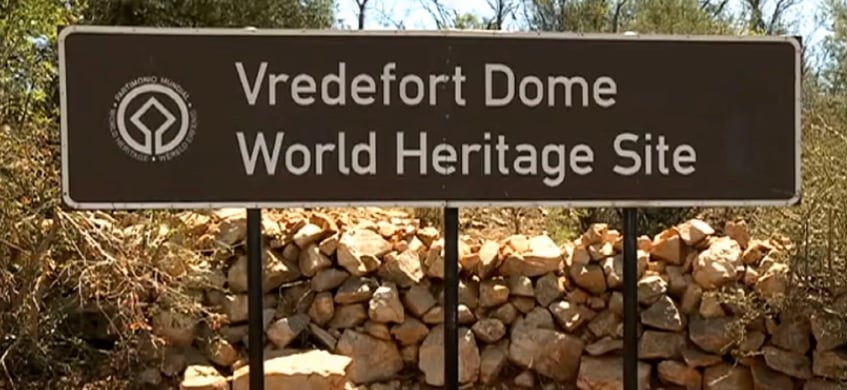
What is the Vredefort Crater in South Africa all about?
You might be asking yourself, what’s so impressive and significant to warrant the Vredefort dome being included in the World Heritage Sites list? Well, the Vredefort crater is the oldest astrobleme.
(To those who don’t know this new word, like myself. An astrobleme is the remains of an asteroid impact structure on the earth’s surface that is usually in the form of a circle-shaped scar and is considered ancient) on earth that is widely accepted dating back to about 2 billion years. A few facts:
- The astrobleme is also the largest on Earth with a radius of 190 km ( 118 mi) and severely eroded.
- The asteroid that caused the crater was according to scientists about 15 km ( 9.3 mi) in diameter and was traveling at a speed of about 15 km/s (33554 mph) which is simply staggering.
- This asteroid created an initial impact structure that is estimated to have been 300 km (186 mi) in diameter, which is much larger than the Chicxulub crater at 150 km (93 mi).
- The Chicxulub crater is the impact crater formed after the asteroid which wiped out the dinosaurs landed on Earth. The asteroid that landed at Vredefort was much larger and had more energy on impact than the dinosaur-killing asteroid.
This means, the impact caused much more havoc and global destruction, but the Vredefort impact did not leave a trail of mass extinctions as there were only single-celled lifeforms at the time.
- The remaining structure, which is a marker for the cataclysmic event is the Vredefort crater, which is made up of concentric rings of hills 70 km (43 mi) in diameter, and a dome. Interestingly enough, the dome was formed as a result of the rock rebounding after the impact.
The dome is a reminder of one of the earth’s greatest single energy release events, that most likely led to some devastating worldwide effects such as severe climate change and significant evolutionary changes according to some scientists.
Impact sites across the globe are important, but geological activities on the earth’s surface have eroded and wiped away evidence of most of these impact sites.
- The Vredefort dome, despite its age, has survived most of these geological activities and is the only example to give scientists a complete geological profile of an astrobleme beneath the crater floor.
Size and Location of the Vredefort Crater in South Africa
The site is about 30,111 ha ( 116.256mi²) and is divided into 4 component areas.
- The main site is about 30,108 ha (116 mi²) while the three component sites are each 1 ha each.
The main site is also surrounded by a 5 km (3.1 mi) buffer zone that was designed to protect the site from threats arising from long-term external developments. - The site is located within the Free State Province of South Africa and it is 120 km (74.5 mi) South West of Johannesburg on the banks of the Vaal river.
When using the road, take the N1 from Johannesburg to the town of Parys. From Parys, you can either use two roads to access the site.
You can use the road to Vredefort which is just 15 km (9.3 mi) long, or you can use the longer route on the R53 road to Potchefstroom which is 50 km (31 mi) and you’ll have to cross the Vaal River at Parys town.
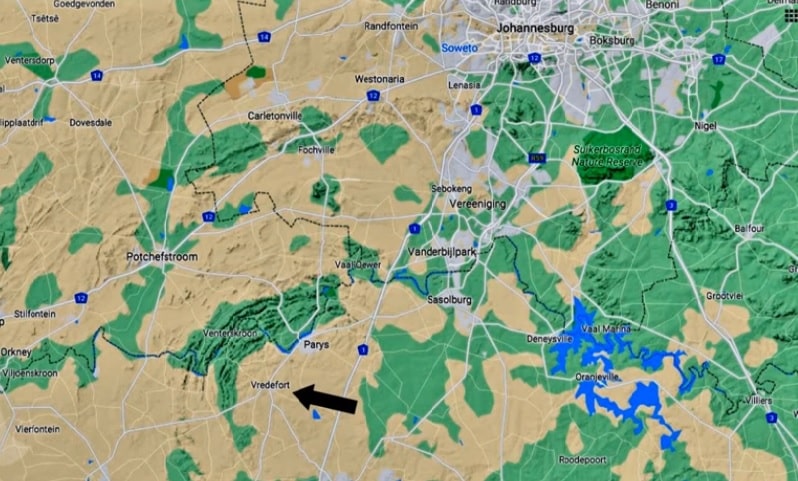
Vegetation and Climate at the Vredefort Crater in South Africa
The Vredefort dome area is situated within a grasslands biome area, between the Transvaal plateau and the Highveld.
But the area isn’t a typical grassland, as it is not flat rather it is hilly, with valleys and a river going through. This results in some unique variations, such as Bushveld species which are usually found about 200 km (124 mi) to the North being present here. Examples of these Bushveld species include tree ferns, Red Ivory and Bush Willow.
Tree species such as Acacia and Wild Olive occur naturally in this area and along the river Vaal.

But don’t be surprised to find other tree species such as blue gum/eucalyptus, poplar, and weeping willow, together with other plant species such as prickly pear and water hyacinth; all these species are what you might call invasive species as they are slowly choking out the indigenous plant species.
The Vredefort dome area is watered by the Vaal River and rainfall, with the area receiving an average of 625 mm (24.6 in) of rain with a majority of it falling during the summer months.
Temperatures during the summer months (December to March), will average between 30⁰ and 15⁰ C ( 86⁰ and 59⁰ F) but the nights can get a little chilly. The winter months (May to July) are much cooler than the summer months with a maximum temperature of 18⁰C (64.4⁰ F).
Birdlife at the Vredefort Crater in South Africa
Want to find the best binoculars for a safari? Check out my blog post here!
The area is home to around 200 species of wild birds. These include:
- Owls,
- sandpipers,
- lapwings,
- guineafowl,
- kestrel,
- falcons,
- kites,
- eagles,
- vultures,
- spoonbills,
- egrets,
- herons,
- cormorants,
- bishops,
- widowbirds,
- sunbirds, starlings, cisticolas, martins, woodpeckers, barbets, swallows, rollers, kingfishers, mousebirds, and swifts.
These are just some of the species that can be found in the Vredefort dome area. One of the best spots for bird viewing is at the Inlandsee Pan near the town of Vredefort, where migratory birds usually converge when they are in town
One thing that might be of help for those who might be going bird viewing in the area is the field guide titled, “BIRDS OF THE VREDEFORT DOME An Easy Photographic Field Guide.” Also, birding is better carried out during the summer months, as migrant species are available at that time.
Best Time to Visit Vredefort Crater in South Africa
The Vredefort dome can be visited all year round, and for those who love hiking, the winter months (May to July) have cooler temperatures.
Activities to do in the area of the Vredefort dome
1. Vredefort meteorite trail.
The Vredefort meteorite trail takes you through the various vegetation biomes of the Vredefort dome area, showcasing the different animals and birds found in the area and the various rock formations of the crater.
The trail is about 60 km (37 mi) long, and is challenging at some points. For overnight stays, self-catering units are provided along the trail, whereby you’ll have to bring everything with you from bedding, toiletries, cooking utensils, and foodstuffs, but water will be provided.
The trail is a good way of immersing yourself in nature, being free from the hustle and bustle of modern areas.
2. Abseiling with earth adventures.
For thrill-seekers, abseiling is the adventure to get your heart beating. For those who might not have an idea what abseiling is. It is an activity close to rappelling but not the same. It is going down a vertical cliff face or rock outcrop with a double rope coiled around the body.
3. Berakah 4X4 eco trail.
This trail is on the Berakah farm in Parys, it is 15 km (9.3 mi) long and takes about 6 hours to complete. It has a trail difficulty rating of between 2 and 4 passing through riverbeds, mountainous areas, bushveld, and savannah. The route is also a self-drive without any guides, so be prepared to tackle it alone.
- Kommandonek hike.
- Flyfishing with earth adventures.
- Visit the Parys Museum.
- River rafting on the Vaal River.
- Birdwatching.
- Mountain biking
- Stargazing.
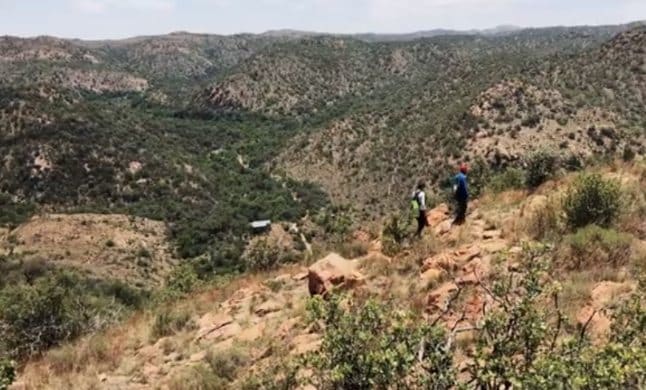
Accommodation at the Vredefort Crater in South Africa
Accommodation can be found in private lodges, hotels, and guest houses on farms in the Vredefort area. Some examples include:
- Bergpatrys at kieriebos.
This is a guest cottage located on the Kieriebos farm in Vredefort.
- Tinktinkie at Kieriebos.
- Bokmakierie at Kieriebos.
- Tava Lingwe Game Lodge.
- Otters haunt Bush Cabins in Parys.
- Riverrun resort farmhouse.
- Delfontein self-catering bush lodge in Vredefort.
Things To Note
- There are many secondary roads winding through the Vredefort Dome area, and they can be quite rough. Although they are graded from time to time, some patches remain that will challenge normal vehicles. You don’t need a 4X4 to access the site, but a vehicle with good ground clearance and a robust suspension system is preferable.
- It is possible to visit and tour the site on your own, but for a much better interactive session, then find a guide. Guides can be found at the World Heritage visitor center and rates can be from 450 ZAR ( 25 USD).
- Unlike other heritage sites that are national parks or designated areas lf protection, Vredefort Dome isn’t like that. The area consists of private lands and farms, and many have accommodation and lodging options within them.
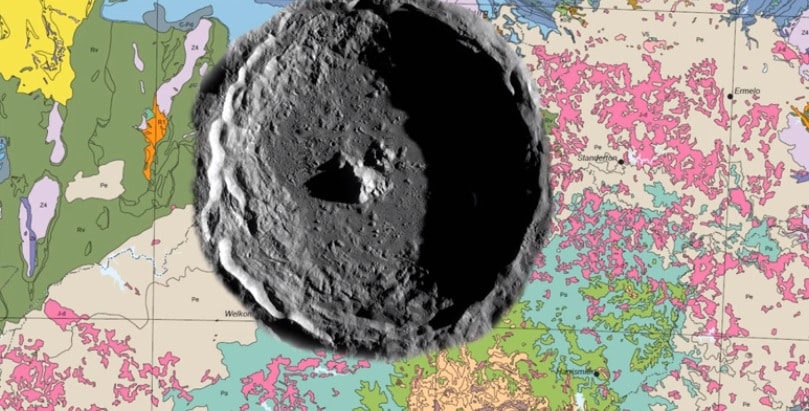
FAQS on the Vredefort crater in South Africa
1. Where is the Vredefort asteroid now?
The Vredefort asteroid was much bigger than the Chicxulub asteroid which killed off the dinosaurs, but the energetic nature of the impact ensured it was pulverized on impact, and as such no evidence of the asteroid remains to date.
The only evidence of its existence is the impact structure and the special rocks formed at the time of impact that points to the impact.
2. How big is the Vredefort crater now?
The remaining structure of the Vredefort dome is about 70 km (43 mi) in diameter. Originally, the crater was according to scientists, 300 km (186 mi) in diameter, but much of the crater features have been eroded away by the Earth’s processes.
3. What minerals come from the Vredefort crater?
The Vredefort dome is associated with a number of high-pressure minerals such as diapletic silica glass, stishovite, and coesite. These minerals require extreme pressures to ensure their formation, and since the surrounding rocks did not reach these pressures, they were formed through an asteroid impact.
My Final Conclusion.
I hope that you enjoyed this blog post on the Vredefort Crater in South Africa, and if you have any more questions, please feel free to leave them down below in the comment section.
You can also join my social media pages for more pictures and stories on my travels to Africa, see you there?
I wish you happy travels!
Kind regards,
Lizzy
I now have a YouTube channel as well!
YouTube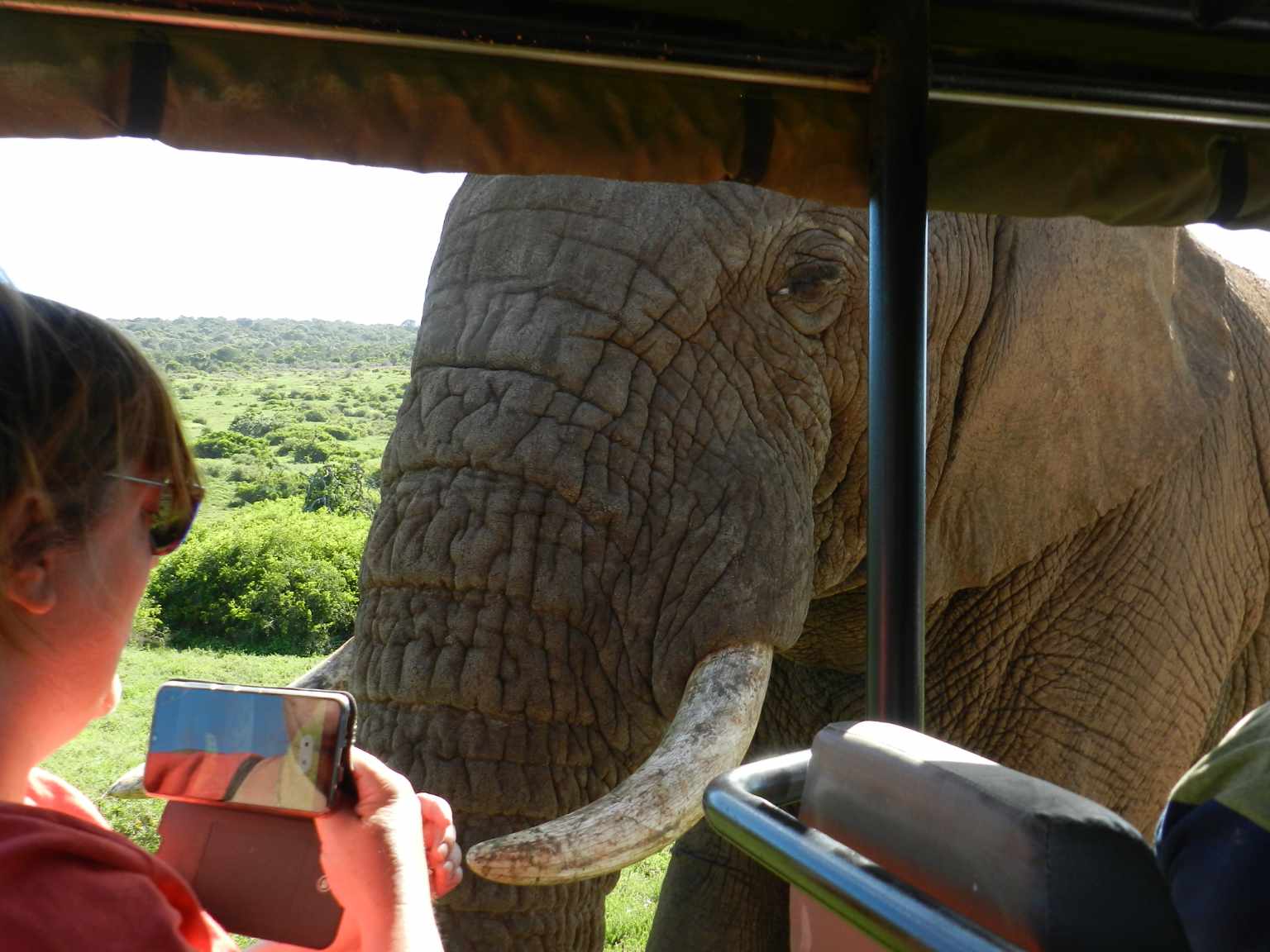
Hello Africa travellers!
Who am I? Well, the least you can say is that I am quite crazy about Africa, its nature, its climate, its culture, and more.
As a young woman in my twenties, I had already traveled to several African countries by traveling along in an overlander on my own and mostly camping ( or glamping ) and just fell in love with the diversity of it all.
So much, so that at the age of 26, I went back to university to study biology, which, unfortunately, I couldn’t finish because of health reasons (yes, I got sick from a tropical disease, oh cynicism). But this did not stop my dream of traveling back to Africa several times, and I still do.
My dream was back then to leave Europe and go study animal behavior, especially the elephants (sure, that’s every girl’s dream haha), but I am also very much intrigued by hyenas and other “ugly African animals“.
So, I “kind of” have a little bit of a scientific approach to my articles, when I write about African birds, for example. And most of all: the passion.
But life goes on, you move from one side of the country to the other, you get sick again and top it off with lower back problems, and before you know it, you are over 50 hahaha!
Now, I still travel to Africa, but take it a bit “easier” than the good old camping days, and stay in comfortable, yet affordable accommodations, together with my husband Wouter.
These are some of the countries I have traveled to: Kenya, Tanzania, Zanzibar, Malawi, Zambia, Zimbabwe, South Africa, Namibia, Botswana, Tunisia, and a little bit of Lesotho LOL .
While clearly not being African territory, but Spanish, I also visited Gran Canaria and Tenerife, and location-wise, I consider them “African”, because of their climate and nature, sue me :-p
The last trip I took was to South Africa in the year 2023, and it sure got the fevers for Africa back! From the Barberton mountains to the Drakensberg and the Southcoast, one month wasn’t enough at all to see the whole country, so we’ll be back! At ease and with a little bit more luxury than in my younger days haha!
I wish you happy travels!
Kind regards
Lizzy

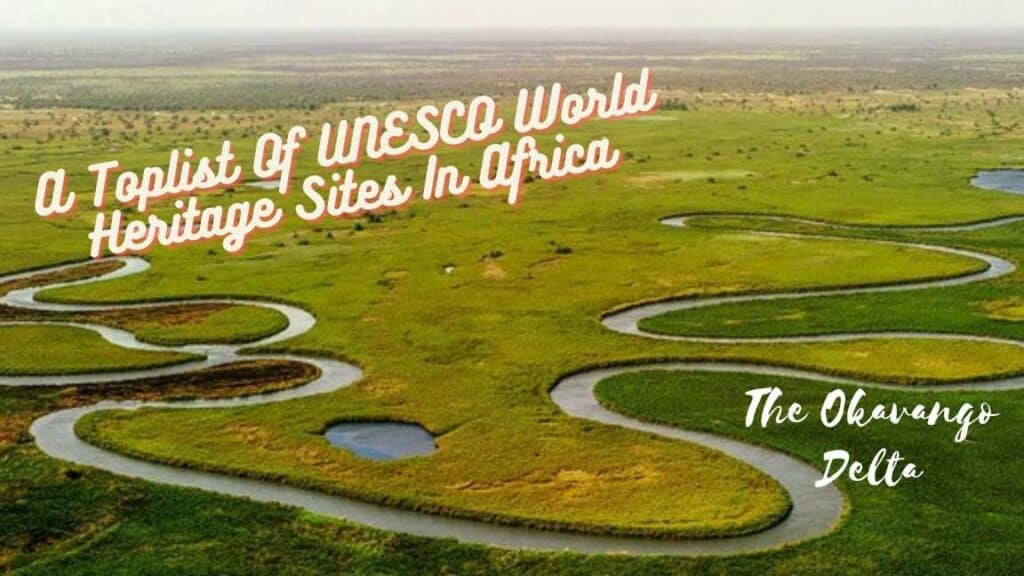
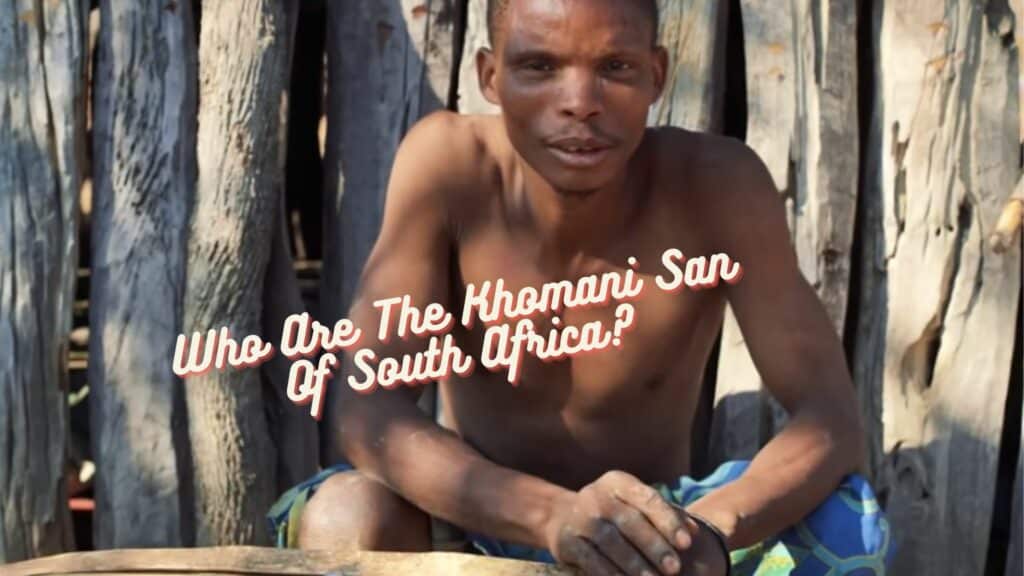
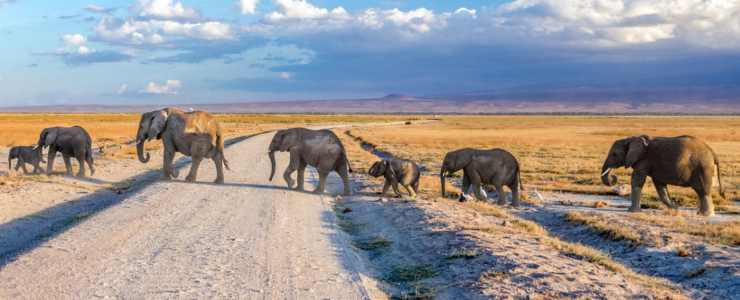

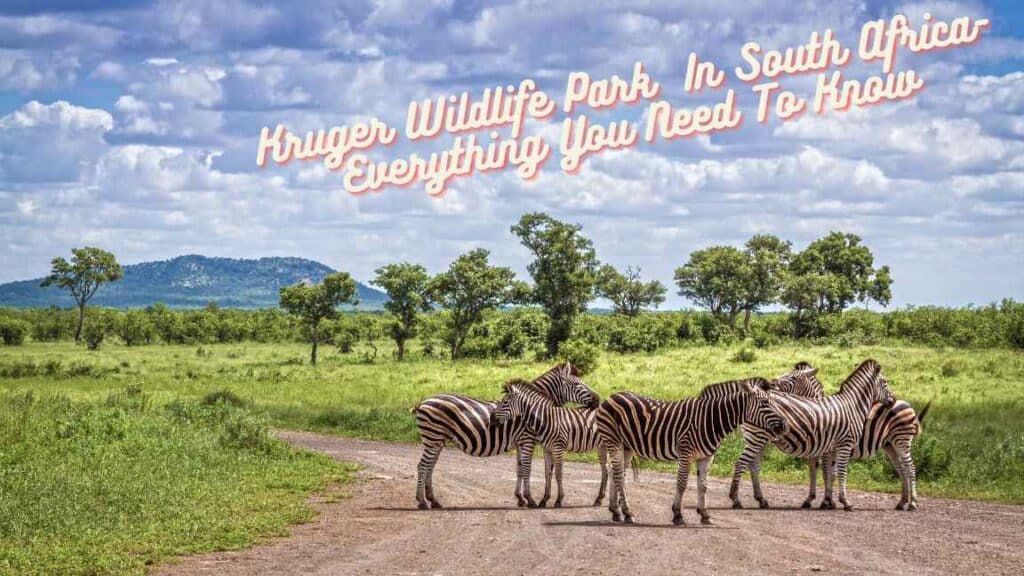

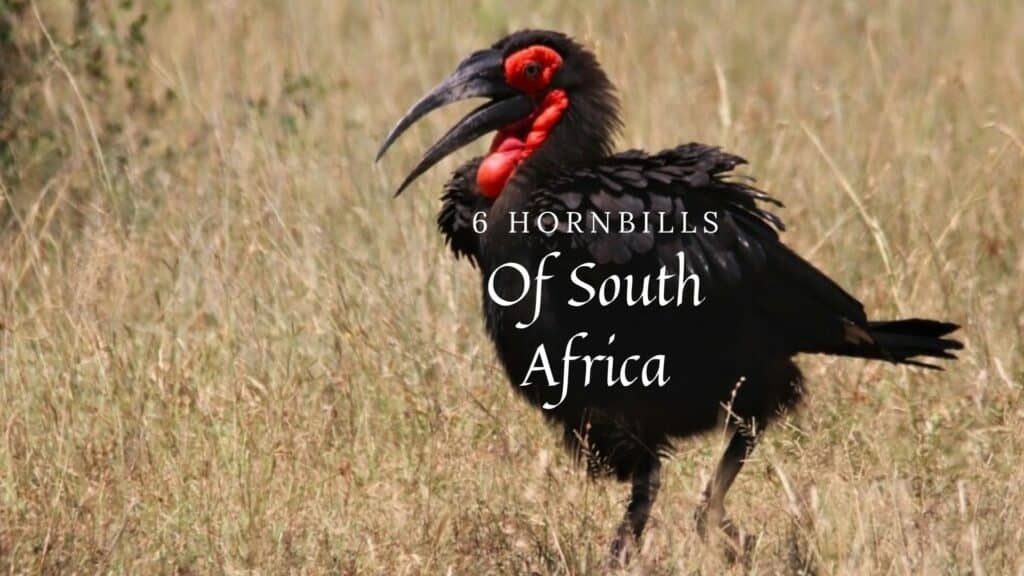
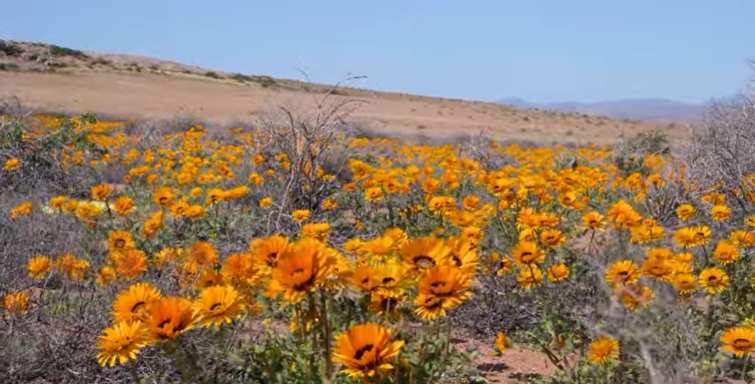


Hey thank you for this post!
I knew South Africa was a wonderful place with many beautiful sceneries however I wasn’t aware this wonderful dome existed.
There are many interesting facts you have stated here about this area, it is literally the only guide you’ll need to be able to gain a deeper understanding before visiting.
Thanks again and have a great day!
Hi Sariyah
Thank you for your positive comment and I hope you will visit the Vredefort Crater soon, feel free to come back and let us know your experiences 😉
Kind regards,
Lizzy
Hi Lizzy
South Africa truly seems to be a country rich in wonders, from its diverse wildlife to its vibrant culture. The Vredefort Crater is an absolute marvel, a living testament to the history of our planet. It’s incredible to think that this monument has endured the test of time and natural forces, allowing us to catch a glimpse of Earth’s ancient past.
It’s fascinating to learn that the Vredefort Dome is considered the oldest crater of its kind globally. Exploring such a historical and geological wonder must be an awe-inspiring experience, giving us a window into the planet’s ancient events.
The detailed information provided in your article about the Vredefort Crater’s size, location, vegetation, and activities makes it a comprehensive guide for anyone considering a visit. I’m particularly intrigued by the activities offered in the area, such as the Vredefort meteorite trail and the Berakah 4X4 eco trail – they sound like fantastic ways to immerse oneself in the natural beauty and history of the site.
Thank you for shedding light on this remarkable site. Have you personally visited the Vredefort Crater, or do you plan to explore it in the future? I’m curious to hear about your firsthand experiences or expectations for a visit!
Sean
Hello Saun!
Thanks so much for your comment and interest in South Africa and more specifically the Vredefort dome!
I haven’t visited myself, yet, but I will this year in October, so keep posted for updates and bookmark my site 😉
I wish you happy travels!
Kind regards,
Lizzy